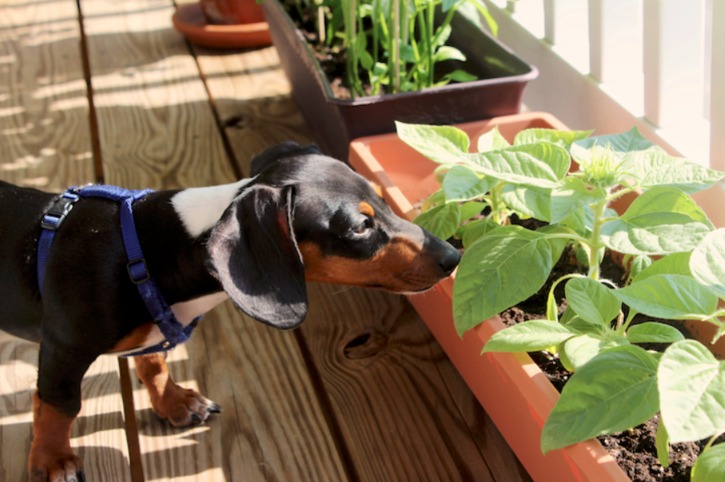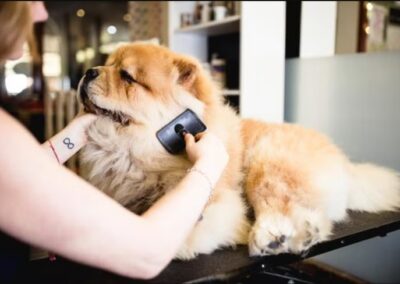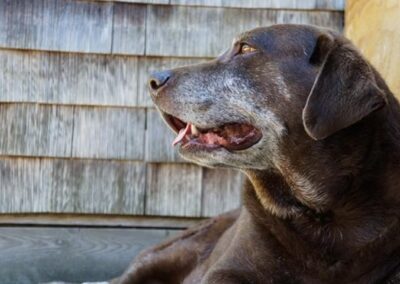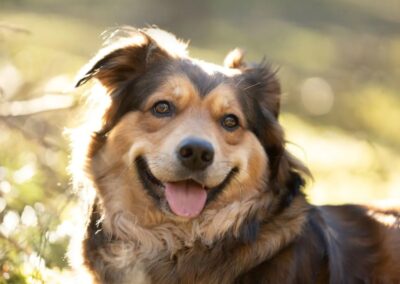
Let’s cut to the chase: your dog’s brain is as hungry for workouts as its paws are for walks. YouTube videos, chewed shoes, zoomies in the living room—these are clues.
So next time you ask “why is my dog jumping on furniture?” maybe the answer is: because they’ve got brain energy they need to burn.
And the good news: training beyond the basics isn’t just for performance dogs or “goodest boys.” Fun cognitive training is simple, effective—and could change your life with your dog forever.
At heart, this is about a shift from obedience to collaboration. Instead of endless “sit-stay” drills, you’re asking: “How can my dog use their brain—and love it?”
According to the training experts at the American Kennel Club (AKC), games that challenge thinking also improve confidence, strengthen the bond, and reduce behavior problems.
Why Brain Games Matter
Think of your dog’s brain like a car engine. Training sit-down-stay is warming it up. But brain games? That’s open highway.
The article explains that beyond the obvious benefits ― better focus, fewer distractions ― there’s also a chemical pay-off: things like eye contact release oxytocin in both you and your dog.
It’s like your bond gets a sleek new upgrade.
When dogs are bored or understimulated: chewing. Barking. Zooming into walls. When you give them tasks, you redirect that energy.
You invite them to think, solve, engage. That’s when behavior improves from the inside out.

Five Fun Games You Can Start Today
Teach Eye Contact
Hold a treat near your eye or forehead. Ask your dog to look at you. Reward them. Phase out the treat. Replace it with your hand or a verbal cue. Eye contact = focus, connection, trust.
Switch Up Walks
Same route? Same sights? It gets stale. Take a new path, walk in a different direction, explore an unfamiliar park. The smells, sights, sounds—everything challenges your dog’s brain.
Hot & Cold Game
While your dog is out of the room or sitting, hide a treat. Use your voice to guide them: “colder…” when they move away, “hotter!” when they get closer. This strengthens their ability to tune in to you and to their own senses.
Solve a Problem
Tie a ribbon or rope to a treat tucked under furniture. Let your dog figure out how to tug or pull the string to get the reward. It builds reasoning skills, which boosts confidence.
DIY Puzzle Toys
Use nested bowls: place a treat in the smallest bowl inside larger ones. Let your dog dig through layers to reach it. Or take soda bottles, place treats inside, and fix them on a rod so your dog has to maneuver to retrieve. These tasks improve focus, memory—and yes, they’re downright fun.
Hide & Seek (Bonus Game)
Ask your dog to wait while you hide. Then call them to come find you. Because dogs love hunting for humans. It activates their senses and gives you huge smiles.
Building the Habit
Short sessions win. Train 30-60 seconds a few times a day rather than one long, exhausting session. Reward early. Stop before frustration sets in.
Then move on to the next beat. Your dog’s progress will surprise you. And the physical toys? Great.
But the real game is in the process—problem-solving, exploration, adapting. Today you hide treats in bowls.
Tomorrow it’s a full puzzle with rope pulls. One step at a time.

What This Means for You & Your Dog
Dogs aren’t just pets—they’re companions built for engagement. Beyond fetch and walks there’s a deeper layer: thinking together. When you train your dog’s brain you gain:
Better focus.
Fewer unwanted behaviors.
A solid bond built on respect and teamwork.
Fun sessions you both look forward to.
Think of it like this: a physically tired dog is good. A mentally stimulated dog is better. Because a dog’s mind that’s “off duty” will make trouble.
But a dog’s mind that’s “on duty” will lean in—to you, to purpose, to problem solving.
The Bottom Line
Training your dog’s brain isn’t optional—it’s essential. Whether you begin with eye contact or a full on DIY puzzle course, start today.
Give your dog the tools to think. When they solve, they flourish. When they flourish, behavior improves. When behavior improves, you both win.
Start small. Build momentum.
And watch your dog light up not just because you handled the leash—but because they handled the game.



